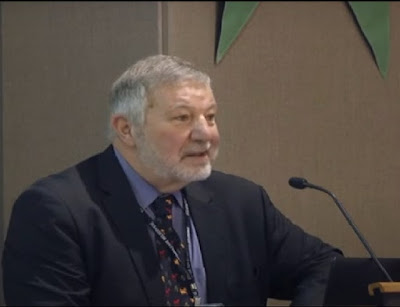The Silk Road in World History by Alfred J. Andrea
Alfred J. Andrea is a Professor Emeritus at the University of Vermont, USA. He is also Past – President of The World History Association.
‘The Silk Road in World History’ is Prof. Andrea’s research article, which has been edited to suit the classroom purpose. Everyone takes for granted that Globalization is a recent phenomenon but it started in 200 BCE with the operation of the Silk Road.
Summary
Silk Road can be defined as a series of ancient trade networks that connected China and the Far East with countries in Europe and the Middle East. The road comprised a group of trading posts and markets that were used to help in the storage, transport, and exchange of goods.
The father of both terms ‘Silk Road’ and ‘Silk Roads’ was Ferdinand von Richthofen, a German geographer, geologist and explorer. For him, Silk Road was a single route to the Land of Silk as described by the first century CE geographer Marinus of Tyre, whereas Silk Roads were the multiple trade routes between imperial Rome and Han China along which the commodity of silk traveled in significant quantities from around 100 BCE down to about 150 CE. Albert Herrmann and Sven Hedin were other scholars who have contributed to the circulation of the term ‘Silk Road’ or ‘Silk Roads’.
Silk was the product which cost the Roman Empire fifty million sesterces annually so that a Roman woman might wear a transparent garment in public. It was the commodity above all others that drove this relatively short-lived era of the silk road commercial exchange.
The Dunhuang site appeared to be a busy desert crossroads on the caravan routes of the Silk Road linking China and the West. For merchants, pilgrims, missionaries, soldiers, diplomats, and other travelers, the Buddhist cave and its monasteries were the places of rest at Dunhuang. For those who accepted the Law of the Buddha, the cave-shrines were a source of spiritual comfort as they either prayed for a safe journey ahead or offered prayers of thanksgiving for their safe return.
Marc Aurel Stein, a British archaeologist and explorer learned the importance of the cave. A Daoist monk named Wang Yuanlu sold Stein a large number of manuscripts and printed documents in a wide variety of Silk Road languages as well as painted silken banners that had been largely preserved from the damage of heat, moisture, disease and insects. Stein perceived that the multiplicity of languages that they represented Dunhuang’s rich multi culture environment in the age of the Silk Road.
Seven international partner institutions in Asia and Europe provide data, serve as hosts for the International Dunhuang Project’s multilingual database and website, are centers for the training of staff in the use of digital media and conservation techniques. IDP’s major partners are located in Britain, China, Korea, Japan, Russia, Germany and France. It is obvious that the present institutionalization of Silk Road studies and its extension on a global scale due to digital technology make sure that we are now in an era of advancement in our understanding of the Silk Road.



0 Comments
Please, do not enter any spam link in the comment box.